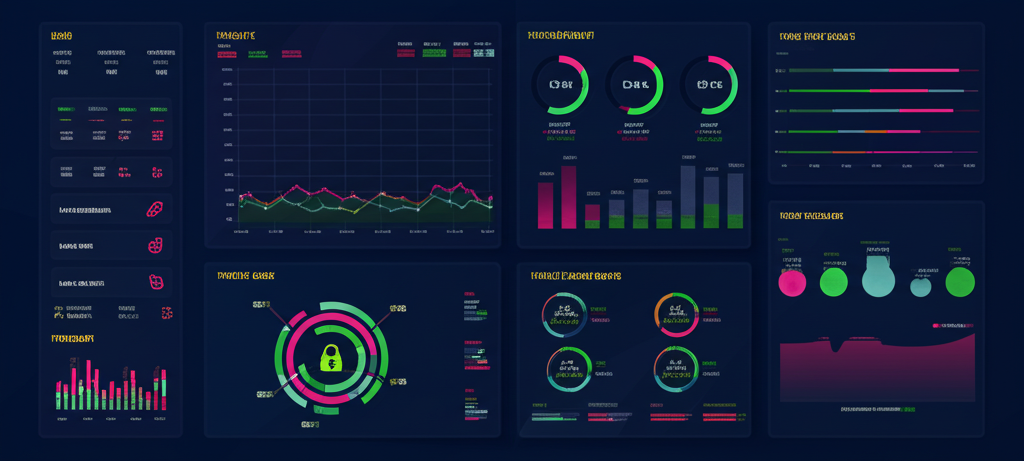Security First: Protecting Your Small Business from Cyber Threats
Small businesses face increasing cyber threats every day. Learn essential security strategies and practical tools to protect your company, data, and customers from cybercriminals.

Why Small Businesses Are Prime Targets
Cybercriminals increasingly target small businesses because they often have valuable data but limited security resources. Unlike large enterprises with dedicated IT security teams, small businesses frequently operate with basic security measures, making them attractive targets for ransomware, data breaches, and financial fraud.
The statistics are sobering: 43% of cyberattacks target small businesses, and 60% of small companies go out of business within six months of a cyber incident. However, with the right security strategy and tools, small businesses can significantly reduce their risk and protect their operations.
"Cybersecurity isn't just about technology—it's about protecting your business, your customers, and your future."
Common Cyber Threats to Watch
Understanding the threat landscape helps you prepare appropriate defenses. Here are the most common cyber threats facing small businesses:
1. Phishing Attacks
Fraudulent emails designed to steal credentials or install malware. These attacks often appear to come from trusted sources like banks, suppliers, or even colleagues.
2. Ransomware
Malicious software that encrypts your files and demands payment for the decryption key. Ransomware can completely shut down business operations.
3. Business Email Compromise (BEC)
Sophisticated scams where criminals impersonate executives or vendors to trick employees into transferring money or sensitive information.
- Social engineering: Manipulating people to divulge confidential information
- Insider threats: Security risks from current or former employees
- Weak passwords: Easy-to-guess credentials that provide easy access
- Unpatched software: Outdated systems with known vulnerabilities
Essential Security Measures
Building a strong security foundation doesn't require a massive budget. Focus on these essential measures that provide maximum protection for your investment:
Multi-Factor Authentication (MFA)
Require additional verification beyond passwords for all business accounts. MFA can prevent 99.9% of automated attacks, even if passwords are compromised.
Regular Backups
Implement the 3-2-1 backup rule: 3 copies of important data, on 2 different media types, with 1 copy stored offsite. Cloud backup services like Carbonite or Backblaze make this affordable and automatic.
Endpoint Protection
- Antivirus software: Real-time protection against malware
- Firewall configuration: Network-level protection against intrusions
- Email security: Filtering spam and malicious attachments
- Web filtering: Blocking access to malicious websites
Critical: Keep all software updated with the latest security patches. Enable automatic updates where possible to close security vulnerabilities quickly.
Employee Security Training
Your employees are both your greatest security asset and your biggest vulnerability. Regular security training transforms your team into a human firewall that can identify and prevent attacks.
Training Topics
- Phishing recognition: How to identify suspicious emails and links
- Password security: Creating strong, unique passwords and using password managers
- Social engineering: Recognizing manipulation tactics used by criminals
- Incident reporting: How and when to report security concerns
Simulated Phishing Tests
Regularly test your team with simulated phishing emails to identify training needs and reinforce security awareness. Services like KnowBe4 or Proofpoint provide automated phishing simulations and training.
Incident Response Planning
Despite best efforts, security incidents can still occur. Having a clear incident response plan minimizes damage and speeds recovery.
Response Steps
1. Immediate Response
Isolate affected systems, preserve evidence, assess scope of breach
2. Containment
Stop the attack from spreading, secure remaining systems
3. Recovery
Restore systems from clean backups, implement additional security measures
4. Lessons Learned
Analyze the incident, update security measures, improve response procedures
Compliance and Regulations
Depending on your industry and location, you may need to comply with specific security regulations. Understanding these requirements helps you implement appropriate security measures and avoid penalties.
Common Compliance Requirements
- GDPR: European data protection regulation affecting any business handling EU citizen data
- PCI DSS: Payment card industry standards for businesses processing credit cards
- HIPAA: Healthcare data protection requirements in the United States
- SOX: Financial reporting requirements for public companies
Building a Security-First Culture
Effective cybersecurity isn't just about implementing the right tools—it's about creating a culture where security is everyone's responsibility. This means regular training, clear policies, and leadership commitment to security best practices.
Start with the basics: strong passwords, regular updates, and employee training. As your security maturity grows, add more sophisticated tools and processes. Remember, cybersecurity is an ongoing process, not a one-time project. Stay informed about new threats, regularly review your security measures, and adapt your defenses as your business grows.